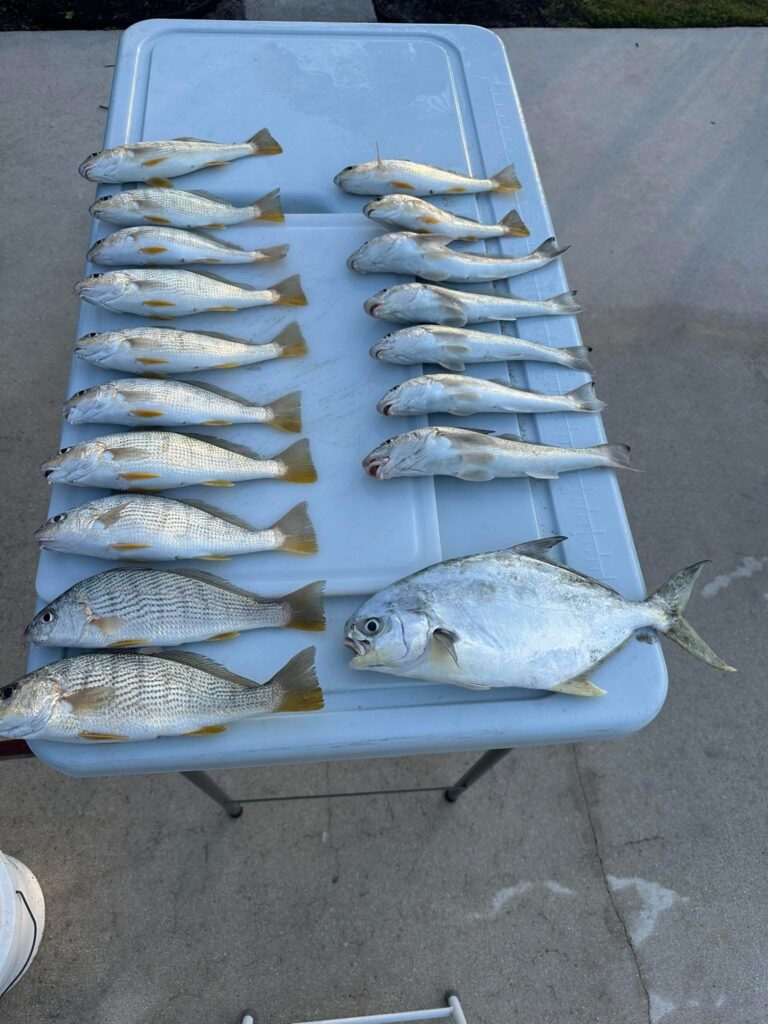Inshore Fishing Report
May is one of the most productive months for inshore fishing in Stuart, Florida. With warm water temperatures, usually calmer conditions and bait becoming more abundant, anglers can expect excellent action in both the Indian and St. Lucie Rivers.
Snook: Our late spring Snook fishing has been heating up for anglers in our area! We are beginning to get into the best time of the year for Snook fishing as they prepare for the summer spawn. Not only do we have a chance to catch a good number of fish, this is the time of year where you tend to see a lot of the bigger breeder Snook caught. When you are targeting or catch the breeder fish, please remember to treat them with care when caught as they will be providing us with our future Snook population. Using circle hooks and reducing their time out of the water are helpful to ensure a strong release of the fish. Snook season remains open until June 1st if you are still looking to harvest a slot. All four main causeways (Jensen, Stuart, 10 Cent & Roosevelt) have been productive over the past few weeks. Fishing the bridges with live Croakers will typically be your best bait choice as they will naturally swim to the bottom. If the current is flowing, utilizing larger split shots is not a bad idea to keep your bait in the zone. Sea walls in both the Indian & St. Lucie River have been productive too. Fishing the sea walls with live mullet or threadfins has yielded anglers with a lot of Snook and some big Jacks. You will find some fish bouncing around the docks too. There has been a lot of life around the power plant including solid numbers of Snook hanging out in the mangroves for those looking to fish to the north. We should begin to start seeing more Snook start moving around and work their way towards the inlets and beaches towards the end of the month approaching their summer spawn so areas like the jetty and Hole in the Wall should begin to be more productive. If you are planning on going out for an evening or night trip, the dock lights have been very productive and there have been a few Trout mixed in with the Snook in certain areas. Live Pilchards, live shrimp, small paddle tails or artificial shrimp will be some of your best bait choices if you’re looking to hit the lights. Those fishing by land have found success at the Jensen Causeway, Indian Riverside Park, wading on the east and west side of the river north of the Jensen Causeway also look for the Snook bite to improve at the Ft. Pierce jetty. With the temperatures heating up, if you are planning on fishing in the afternoon or later in the morning on some of our warmer days, try to fish in areas with either deeper water, flowing current or shaded areas as the Snook will head to these areas as the water heats up. If you are looking to fish artificials, mornings, evenings and at night will be your best bet.
Tarpon: The Tarpon have not yet been widespread inshore, but there have definitely been a few around. Anglers have found Tarpon around the Stuart Causeway as well as up by the power plant. Larger live mullet has been the ticket for those fishing live baits. Drifting crabs on a float around the bridges should find you a bite too when they are around. We have not really had a good flush of crabs this year so the crabs have been on the scarce side this year. For those fishing artificials, the DOA Bait Buster and DOA TerrorEyz are tried and true great lures for targeting Tarpon.
Pompano: The inshore Pompano fishing was definitely on the slower side compared to previous years in April. Our cooler winter this year may have delayed the action with reports of fish still to the south of us that will need to migrate north. For those that have been targeting them, anglers have been able to pick away at a few on the Jensen Causeway east side relief bridge. A lot of the Pompano have been caught directly at your feet up to 10ft away from the bridge so be sure to work your jig through that zone. You’ll definitely want some current flowing as it really slows down during slack tide. 3/8oz and 1/2oz Pompano jigs have been the most popular choices.
Trout: Those who are targeting Trout have still been able to pick away at a few. The better numbers of fish have been caught north of the power plant on both the east and west sides of the river. On the west side, you will have your better shot at finding a school of them at the end of the docks. There have been Trout caught as far south as Joe’s Point just south of the Jensen Causeway along with a few mixed in the dock lights. Targeting them with soft plastics such as DOA Cals, artificial shrimp, top waters or twitch baits will get the job done when you find yourself around them. For those looking to fish live baits, live shrimp on a popping cork is an effective strategy too.
Misc: There have been some Tripletail caught by those running the crab trap buoys north of the Jensen Causeway. When you do find one, pitching them a live shrimp will typically get you the bite. We will typically have one rod rigged with a jig head and one rod rigged with a small cork to offer two different presentations if they aren’t cooperating. Stone crab season closes in May so you will see a whole lot less buoys in the water which can be a good or bad thing depending on how you look at it. The Tripletail are still around, but will move to channel markers and other structures with the absence of the buoys. The Sheepshead and Black Drum bite has slowed down with the warmer water temperatures, but we should begin seeing some better Mangrove Snappers here inshore as we approach the summer. Plenty of big jacks have been around cruising the channels and sea walls too.
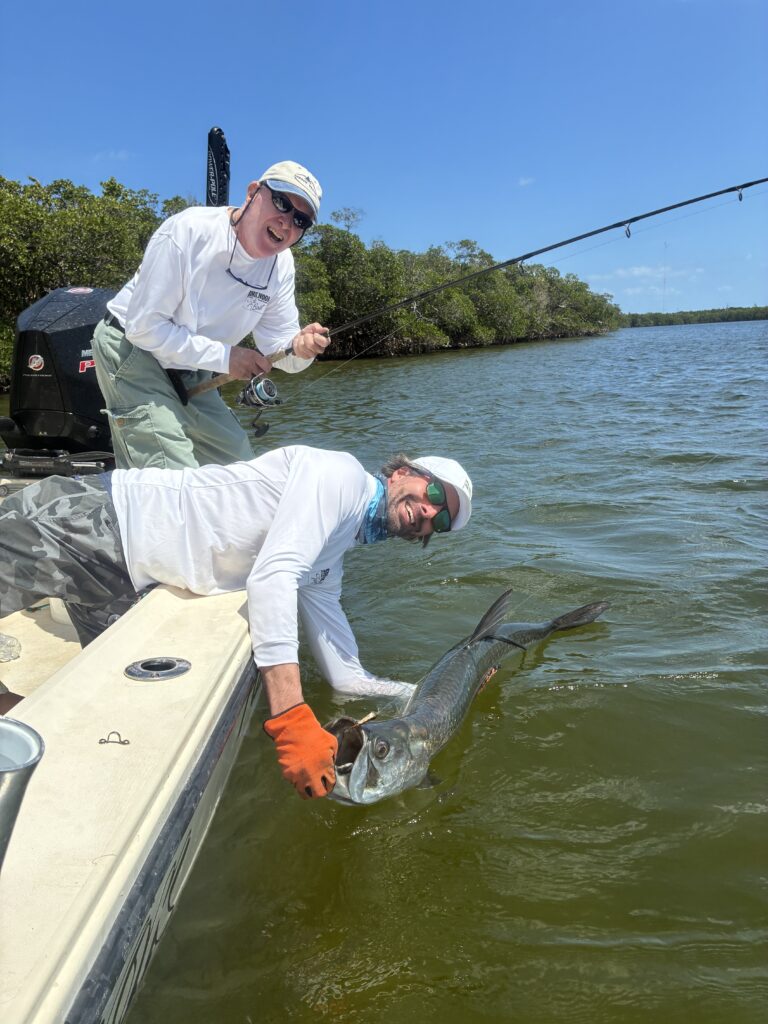
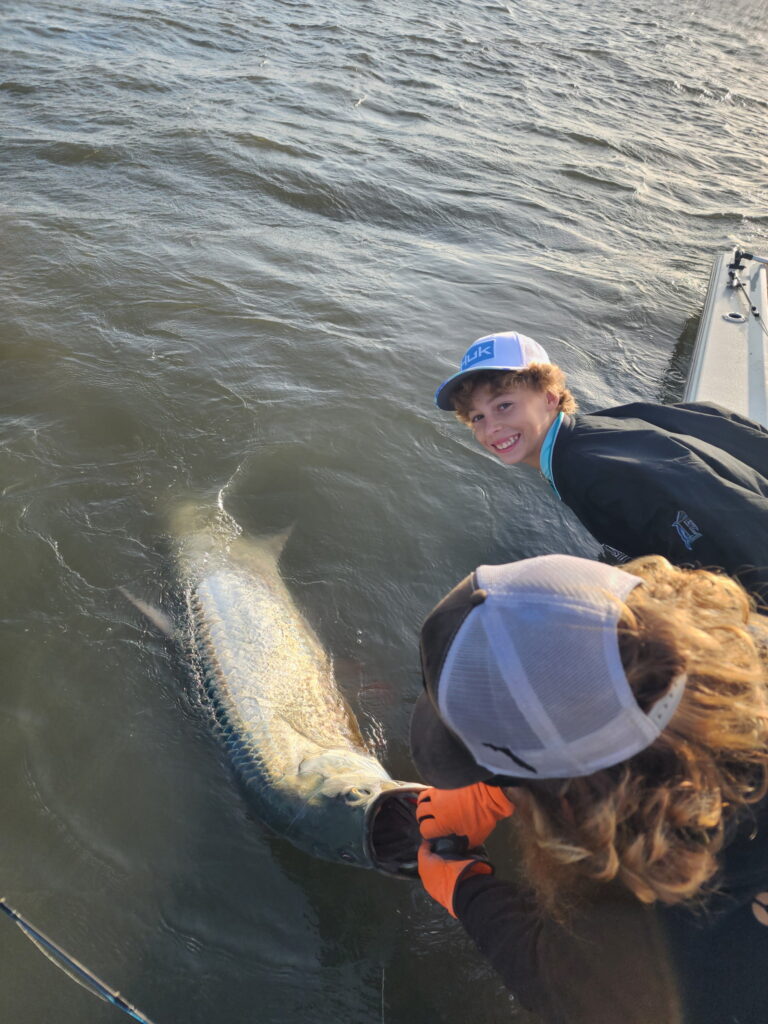
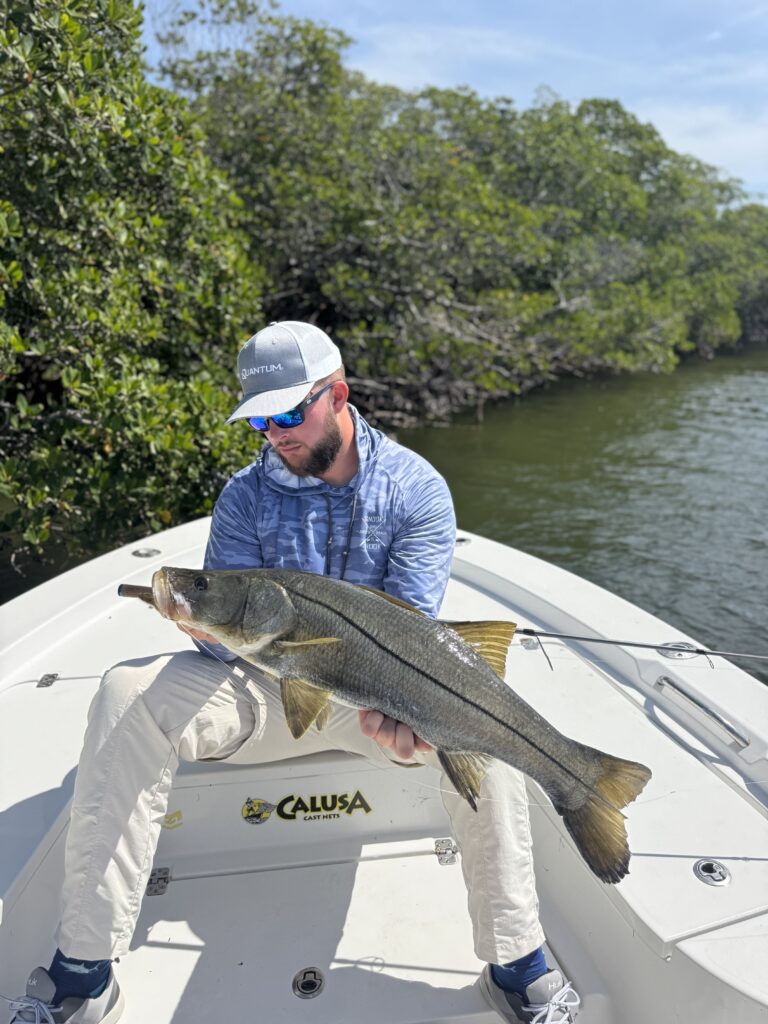
Offshore Fishing Report
Mahi: April greeted us with a pretty decent showing of Mahi in our area with some steady numbers due to fish coming in groups so be sure to have your pitch baits ready. We haven’t seen a lot of big ones around yet, mainly small gaffers and schoolie sized fish. We tend to see the bigger Mahis start arriving towards the end of April and into May. Trolling to find a school of them can be extremely effective, be sure to keep one fish in the water to keep the school around when you do find them. You will see a mixture of boats trolling and fishing live baits by either kite fishing, bump trolling or just drifting this time of year. With live bait becoming more abundant this time of year, you will see a lot of anglers just go straight to live baiting. Look to start your fishing in an area with a condition such as a current rip, color change, temperature change, weedline, floating debris or signs of life such as bait, birds or other marine life. These fish will move around a good bit, they can be caught in numbers one day and be nowhere to be found the next day. They can be found as shallow as 60’ all the way out to 400’+ this time of year.
Sailfish: The Sailfish bite can be pretty good this time of year! Look for them in the same areas as you would be looking for your Mahi. Fish will congregate in those areas with a good condition. There also typically always tends to be a few around the six mile and Loran Tower this time of year in the 70’-110’ range mixed in with the Kingfish. Fishing live baits such as Goggle Eyes or Threadfins on kites will be one of your most effective strategies this time of year for those looking to target Sails. Bump trolling live baits will get you some bites too. If you’re looking for live baits, reserve your baits with Stuart Live Bait! Call or text them at 772-985-0425, they sell live Threadfins and Goggle Eyes on the water in the Manatee Pocket in the mornings.
Blackfin Tuna: The Blackfin Tuna bite has remained productive out at Push Button Hill with a lot of Tunas making it in the boat. If you are going out first thing, you can troll to find your bites as the Tunas will start pushing down as more boats start trolling over them and as the sun gets higher. Trolling feathers or small squid chains should get you a bite. When the fish start pushing down, you can send out some live baits with a lead and stagger them at different depths and wait for a Tuna to find your bait. You can also mark the schools of Tunas on your machine and drop jigs to the depths you are marking them at. Kite fishing for the Tunas can be a very effective strategy as your kite will hold your baits over water that you haven’t gone over yet so the fish haven’t had the chance to see your boat and get spooked. If you see them feeding on the surface, throwing a popper at them always makes for a really cool bite and a fun fight. We’ve been seeing some Skipjack Tunas mixed in with the Blackfins as well. We also tend to start seeing Blackfins spread around this time of year, coming in as shallow as 75’. When you do find the Blackfins off of Pushbutton, they tend to all be quality sized fish averaging at least around 20lbs.
Kingfish: Kingfish are very common for us in May. You will typically find them around the reefs and wrecks with better numbers of fish between 60’-90’. We’ve had some quality sized Kingfish caught recently with several fish weighing in the 50lb class. Fishing live baits or trolling with large spoons or lipped plugs will work for them. You may find them to be a nuisance when targeting other species if you are fishing with monofilament leaders.
Cobia/Permit: Our Cobia fishing has been pretty much a let down compared to past years as they still haven’t made a strong appearance on the local nearshore reefs. If you are bottom fishing on the reefs, having a Cobia jig tied onto a rod isn’t a bad idea in case one of them comes up to the boat. The Cobias that have been caught have been caught at the boils offshore of the power plant, by those running the beach looking for them, on the reefs as well as on the tide lines around the inlet. Also be on the lookout for them when you see Manta Rays or Leatherback Turtles. The Permit fishing has been pretty good at the boils offshore of the power plant. If you are able to get your hands on some crabs, they will be your best option to throw at them either free lined or on a jig head. Only problem is that the crabs have been tough to find.
Grouper: Grouper season reopens on May 1st! Remember that if you are going bottom fishing, FWC requires that you have a venting tool and descending device onboard with you. If you need either of these tools we have them available at the shop. Target depths range from 50 to 180 feet, with 120 to 160 feet being particularly productive for those looking to target Gags, Scamps & Reds. Fishing big cut baits, whole squids and larger live baits will weed out a lot of the smaller fish and isolate your catches to mainly Grouper and Amberjacks. You will want to fish heavy tackle to get these fish off the bottom and past the sharks, 80-125lb leader, heavy line, plenty of drag and leads heavy enough to keep your bait pinned to the bottom will help find the result that you are looking for. Don’t bring a knife to a gunfight when targeting Grouper! Methods such as slow pitch jigging are also extremely effective. If you’re looking to target Snowy Grouper or Yellowedges, look for ledges out at Pushbutton and deeper and fire a deep drop rig down with whole squids to see if you can get one to cooperate.
Snappers: We see our Snapper fishing really tend to pick up as we get into May. Look to find your Muttons on bottom in the 70’-90’ range. You will want to fish a long leader, typically about 40’ of 40lb and enough lead to hold the bottom as they do get line shy. Live baits along with larger dead baits such as grunt plugs, butterflied Ballyhoo and Bonito strips are some of the go to choices. Fishing a larger dead bait is very effective because it allows you to keep bait on your hook while the “pickers” such as grunts and smaller reef fish pick away at your bait. Those fish picking at the bait will also get the Mutton’s attention and they will come over to check out what they are feeding on and will eat the bait. Our Mangrove Snapper bite has begun to pickup and will continue to improve going into the summer. Fishing live pilchards or sardines are effective live bait choices, you don’t want to use a bait too big to where they can’t eat it. You can catch them on cut bait such as cut sardines and threadfins as well. The Vermillion Snappers have still been caught consistently out at Pushbutton Hill on chicken rigs with pieces of squid. You can also start finding them on shallower bottom as well this time of year.
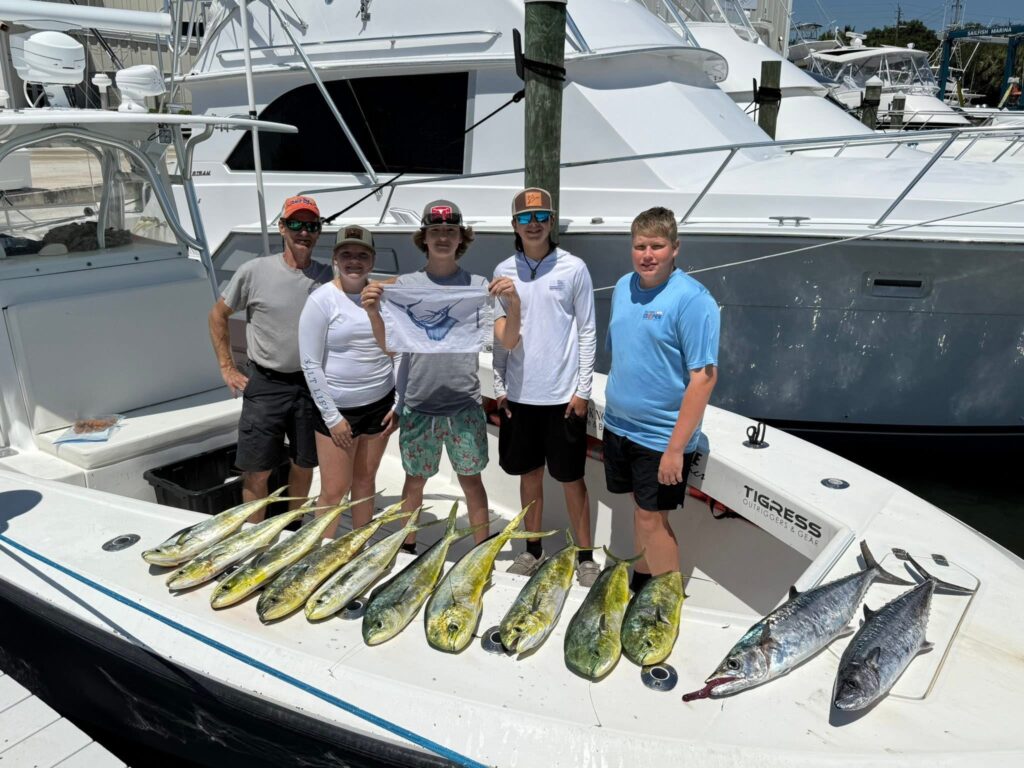
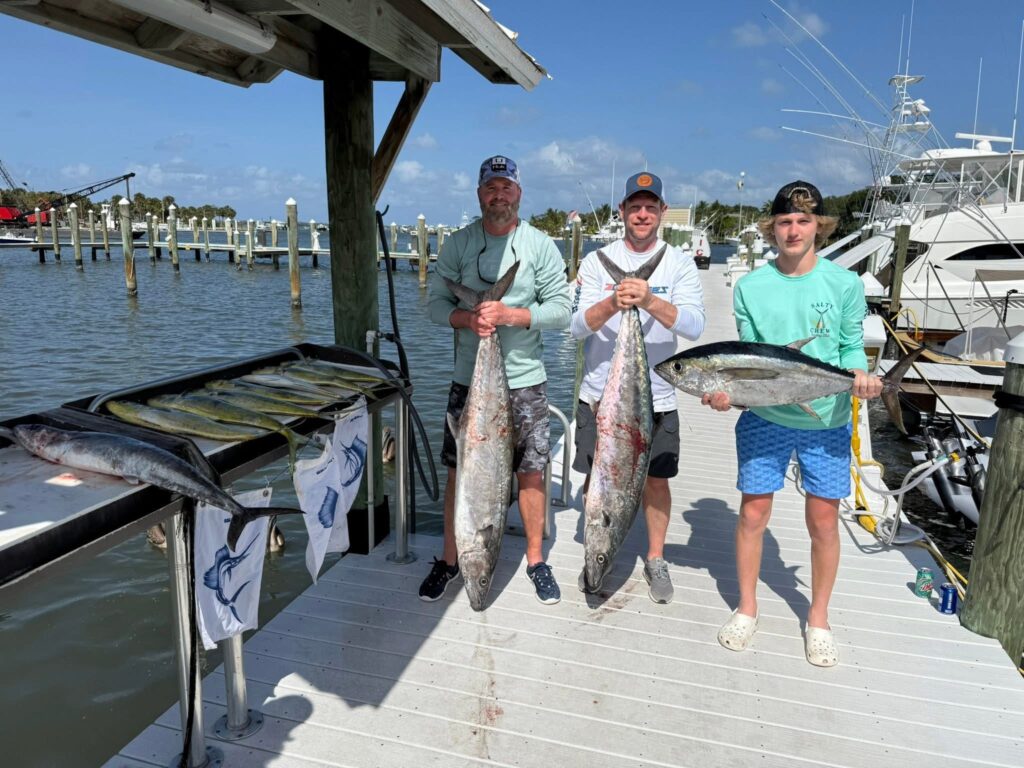
Surf Fishing Report
Anglers fishing from the beach have been able to pick away at some of the Pompano that have been migrating north. The majority of the action ranged from 50-80yds off the beach and action has been found both in the mornings and in the afternoon. If you are fishing multiple rods, it is always wise to vary your casting distances to see where the fish are feeding that day, it isn’t uncommon to see a few Pompano coming in even closer this time of year. Hot baits have been the new EZ Flea Electric Chicken along with the traditional standard EZ Flea. Those fishing with Sand Fleas have been able to land some too. We are still hearing about schools of fish caught to the south of us which will have to work their way north so we should expect to see a little more Pompano action before the season is over.
The Whiting and Croaker fishing has been pretty good. You will want to focus your fishing around the high tide mark if you are targeting them. Be sure to not over cast, the majority of the fish will be caught 10-20yds off the beach. Bloodworm Fishbites as well as Shrimp Fishbites tipped with a small piece of shrimp will get you your bites. Expect the Whiting and Croaker fishing to get better as we approach the summer.
As we get into May, we will begin to start seeing Snook out on the beaches. If you catch a smaller Whiting or Croaker, you can free line it in the first trough to see if any Snook are around. Fishing live pilchards or Threadfins will work as well when the bait gets close enough to sabiki from the shoreline. Casting artificals such as white paddle tails, twitch baits or lipped plugs like Rapala X-Raps north and south in the mornings and evenings can lead to a few Snook bites as well.
